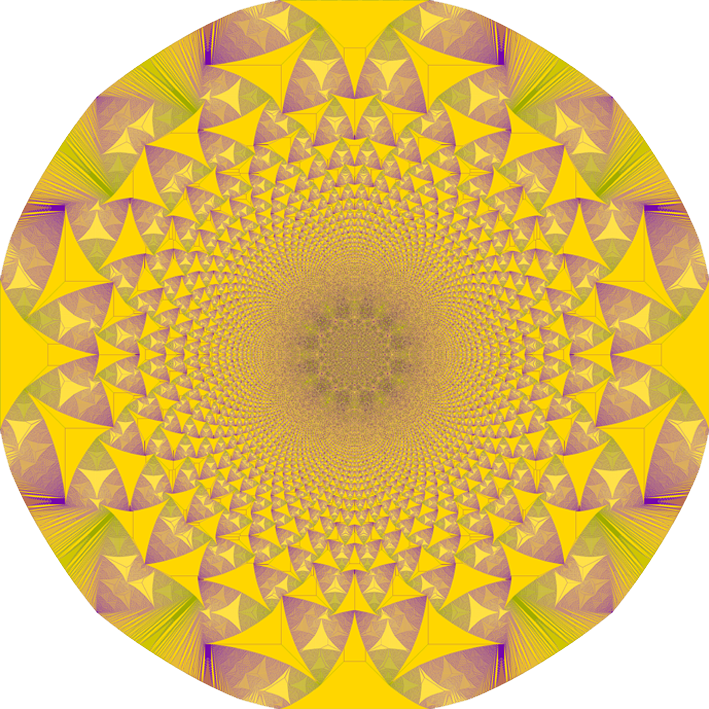Welcome to
Summer School on Cellular Automata Technology 2023
Organized by
Cellular Automata India
In association with University of Béjaïa, Algeria
Mode of Internship: Hybrid
Duration: 22nd May 2023 - 21st July 2023
Last Date of Registration: 15th May 2023

About School
Summer School on Cellular Automata Technology 2023
This is the third year of internship program on Cellular Automata: Theory and Applications. This year the internship is more rigorously project based and the theory relevant to the projects will be discussed in class.
Research Oriented
Technology Development
Course Work & Problem Solving
Expected to Submit in ASCAT 2024

Broad Areas of the Summer School
Broad topics to be covered for this year:
- Introduction to Cellular Automata
- Cellular Automata: A Model of Mathematical Consciousness
- Cellular Automata Technology: Present and Future
- Thrust Application Areas:
- Cellular Automata for Supervised and Unsupervised Learning
- Pseudo-Random Numbers and Patterns Generation by Cellular Automata
Evaluation: The participants are to be evaluated by periodic assignments, written examinations and project work. Every participant has to complete his/her project and submit a final project report.
Outcome of the school: Against each project, a paper is to be written for submission (preferably to ASCAT 2024). The participants have to complete the paper to get the final certificate for attending the school.
Mentor: Participants will be guided by the mentors. Publications will be joint publication - by participants and mentors.
Eligibility: Graduate students (Masters, PhD, PostDoc), researchers and faculty members, highly motivated undergraduate students.
Fees: There will be NO fees for participating in the school. But the participant has to attend all the classes and complete the project work to get the certificate.
Active Projects
Active Projects in Summer School 2023
- All
- Rezki Chemlal
- RK Goyal
- M Nazma Naskar
- Sukanya Mukherjee
- Sudhakar Sahoo
- Kamalika Bhattacharjee
- Others
SEIQR epidemiological model using PCA (Probabilistic Cellular Automata)
Aditi Sant1
Supervisor. Rezki Chemlal2 (rchemlal@gmail.com)
1 MKSSS’s Cummins College of Engineering for Women, Pune
2 Bejaia university
Urban modeling using cellular automata
Aliva Pattanaik1 and Sweeti Tiwari1
Supervisor. Rezki Chemlal2 (rchemlal@gmail.com)
1 Institute of Mathematics and Applications
2 Bejaia university
Fire spread modeling using probabilistic cellular automata
Jishnu Adhikary1 and Rohit Ghosh1
Supervisor. Rezki Chemlal2 (rchemlal@gmail.com)
1 Government College of Engineering and Ceramic Technology affiliated under MAKAUT
2 Bejaia university
A partitionned asynchronous cellular automata model for language shift in Algeria
Nacira Allaoua1
Supervisor. Rezki Chemlal2 (rchemlal@gmail.com)
1,2 Bejaia university
Cellular automata models of road traffic
Noura Ould Ali1
Supervisor. Rezki Chemlal2 (rchemlal@gmail.com)
1,2 Bejaia university
Exploring the conditions under which cellular automata can exhibit chaotic behavior
Yousfi Hasna1 and Asma Ladjeroud1
Supervisor. Rezki Chemlal2 (rchemlal@gmail.com)
1Echahid Cheikh Larbi Tebessi University, Tebessa, 12002, Algeria.
2 Bejaia university
Information Theoretic Analysis of ECA Rules
Vinod Jha1
Supervisor. RK Goyal2 (rkgmoocs@gmail.com)
1Indian Institute of Engineering Science and Technology Shibpur
2 University School of Information, Communication
and Technology (USICT), Guru Gobind Singh Indraprastha University, Delhi.
On the usage of HodgePodge machine and related models of excitable media in analyzing social phenomena (like, opinion formation)
Ramachandran SS1
Supervisor. RK Goyal2 (rkgmoocs@gmail.com)
1North Carolina State University
2 University School of Information, Communication and Technology (USICT), Guru
Gobind Singh Indraprastha University, Delhi.
When Network Science Meets Cellular Automata: Mining ECA behavior using network-science centric techniques
Deepshikha Urmaliya1 and Sanchit baweja 2
Supervisor. RK Goyal3 (rkgmoocs@gmail.com)
1Institute of Mathematics and Applications
2Maharaja Surajmal Institute of Technology
3 University
School of Information, Communication and Technology (USICT), Guru Gobind Singh Indraprastha University, Delhi.
When Genetic Algorithm Meets Cellular Automata: A mutual benefit perspective
Avik Shakhari1 and Saatvik Sankarram 2
Supervisor. RK Goyal3 (rkgmoocs@gmail.com)
1Institute of Mathematics and Applictions, Andharua, Bhubaneswar
2National Institute Of Technology, Tiruchirappalli
3 University School of Information, Communication and Technology (USICT), Guru Gobind Singh Indraprastha University, Delhi.
Designing of multi-label pattern classifiers using hybrid cellular automata
Medha Sen1Tandeep Das
Supervisor. M Nazma Naskar2 (naskar.preeti@gmail.com)
1Indian Association for the Cultivation of Science2KIIT University Bhubaneswar
Designing of a pattern classifier using 3-neighborhood d-state CA with d>2
Sindhuja J1
Supervisor. Sukanya Mukherjee 2 (sukanyaiem@gmail.com)
1National Institute Of Technology, Tiruchirappalli
2Institute of Engineering & Management, Kolkata,
India
Designing of a pattern classifier using k-neighborhood binary CA with k>3
B.S.Subrahmanya Bharadwaaj1 and Harisankar VS1
Supervisor. Sukanya Mukherjee 2 (sukanyaiem@gmail.com)
1National Institute Of Technology, Tiruchirappalli
2Institute of Engineering & Management, Kolkata,
India
Study of fully asynchronous CA for clustering problem
Virendra Gautam1
Supervisor. Sukanya Mukherjee 2 (sukanyaiem@gmail.com)
1Indian Institute of Engineering Science and Technology Shibpur2Institute of Engineering & Management,
Kolkata, India
Solutions on 1-D and 2-D Density Classification Problem using Number Conserving Programmable Cellular Automata with Applications
Adbdullah Kazi1 and Swarnava saha2
Supervisor. Sudhakar Sahoo3 (sudhakar.sahoo@gmail.com)
1University of Mumbai
2The Neotia University
3Institute of Mathematics and Applications, Bhubaneshwar, Odisha, India
A Study on the various parameters of Cellular Automata rules that are used for Optimization Techniques
Arijit Ghosh1
Supervisor. Sudhakar Sahoo2 (sudhakar.sahoo@gmail.com)
1Utkal University, Bhubaneswar, Odisha
2Institute of Mathematics and Applications, Bhubaneshwar, Odisha, India
Modeling and Pricing Complex Financial Derivatives using Stochastic Cellular Automata in a Prescriptive Business Analytics Framework
Sudhanshu Sekhar Sahoo1
Supervisor. Sudhakar Sahoo2 (sudhakar.sahoo@gmail.com)
1Utkal University, Bhubaneswar, Odisha
2Institute of Mathematics and Applications, Bhubaneshwar, Odisha, India
Modeling and Pricing Complex Financial Derivatives using Stochastic Cellular Automata in a Prescriptive Business Analytics Framework
Suraj Gupta1
Supervisor. Kamalika Bhattacharjee1 (kamalika.it@gmail.com)
1National Institute Of Technology, Tiruchirappalli
Reversible Cellular Automata For Pattern Classification
BABY CJ1
Supervisor. Kamalika Bhattacharjee2 (kamalika.it@gmail.com)
1Government College Of Engineerimg,Kannur,Kerala
2National Institute Of Technology, Tiruchirappalli
Development of Pseudo random Number Generator Using Temporally Non-Uniform Cellular Automata
Subrata Paul1
Supervisor. Sukanta Das1 and Kamalika Bhattacharjee2 (kamalika.it@gmail.com)
1Indian Institute of Engineering Science and Technology Shibpur
2National
Institute Of Technology, Tiruchirappalli
Modelling urban change with cellular automata
Nassima AIT SADI1
1Bejaia university
Proposed Projects
Projects of the Summer School on Cellular Automata 2023
Supervised by Dr. Kamalika Bhattacharjee
Role of distant neighbor in maximality and randomness;
Reversible Cellular Automata For Classification;
Multiple Stream Parallel Random Number Generation using Cellular Automata;
Supervised by Dr. Sudhakar Sahoo
Solutions on 1-D and 2-D Density Classification Problem using Number Conserving Programmable Cellular Automata with Applications;
Modeling and Pricing Complex Financial Derivatives using Stochastic Cellular Automata in
a Prescriptive Business Analytics Framework;
Supervised by Dr. Rezki Chemlal
SEIQR epidemiological model using PCA (Probabilistic Cellular Automata);
Urban modeling using cellular automata;
Fire spread modeling using probabilistic cellular automata;
Attractors of cellular automata;
A
partitionned asynchronous cellular automata model for language shift in Algeria;
Supervised by Dr. RK Goyal
When Network Science Meets Cellular Automata: Mining ECA behavior using network-science centric techniques;
When Genetic Algorithm Meets Cellular Automata: A mutual benefit perspective;
On the usage of HodgePodge machine
and related models of excitable media in analyzing social phenomena (like, opinion formation);
Information Theoretic Analysis of ECA Rules;
Supervised by Dr. Sukanya Mukherjee
Designing of a pattern classifier using k-neighborhood binary CA with k>3;
Designing of a pattern classifier using 3-neighborhood d-state CA with d>2;
Study of fully asynchronous CA for clustering problem;
Supervised by Dr. M Nazma Naskar
Designing of multi-label pattern classifiers using hybrid cellular automata;
Read MoreOther Projects
A Study on the various parameters of Cellular Automata rules that are used for Optimization Techniques;
Exploring the conditions under which cellular automata can exhibit chaotic behavior;
Modelling urban change with
cellular automata;
Development of Pseudo random Number Generator Using Temporally Non-Uniform Cellular Automata;
Exploring the conditions under which cellular automata can exhibit chaotic behavior;
Early detection
of Parkinson's disease based on Non Uniform Cellular Automata (supervised by Prof L Jeganathan);
Our Mentors
Meet Our Mentors
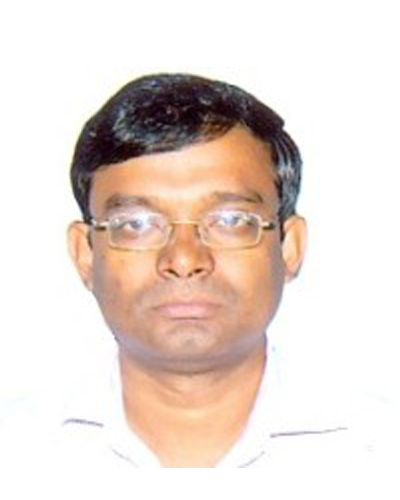
Sukanta Das
IIEST Shibpur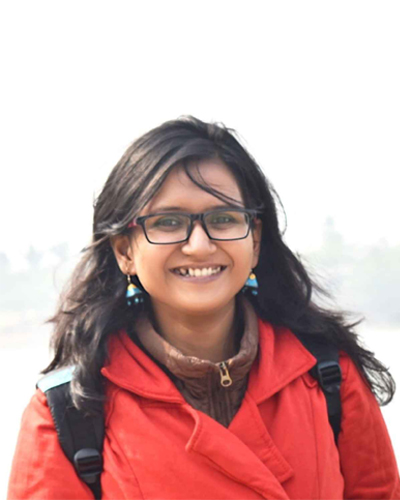
Kamalika Bhattacharjee
NIT Tiruchirappalli, India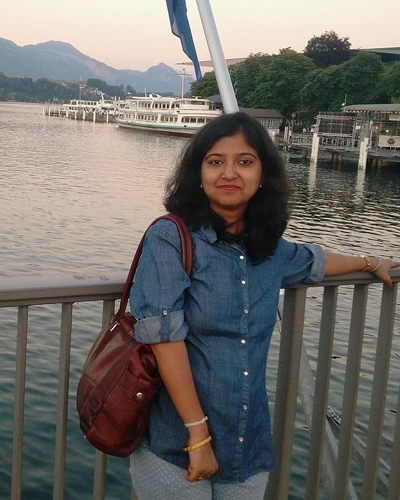
Sukanya Mukharjee
IEM Kolkata, India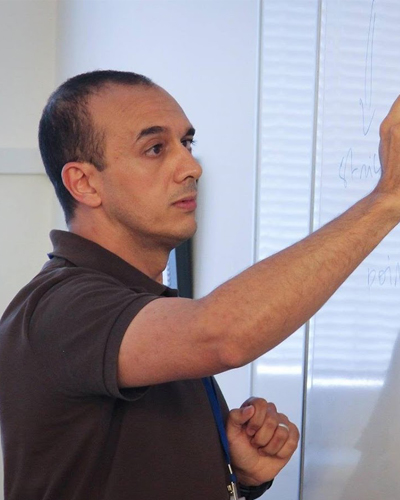
Rezki Chemlal
University of Bejaia, Algeria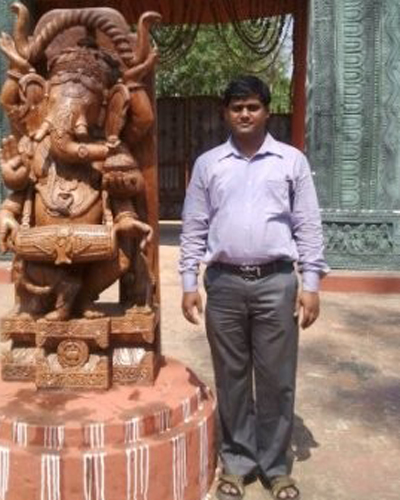
Sudhakar Sahoo
IMA, Bhubaneswar, India
M Nazma BJ Naskar
KIIT University, India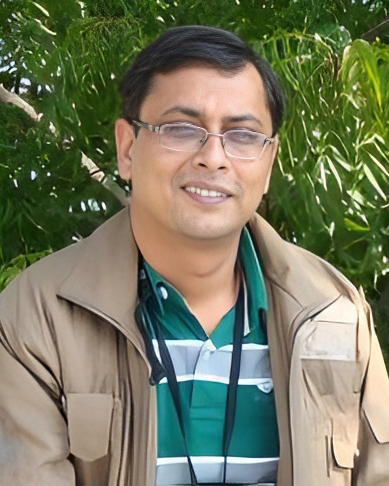
Rinkaj Goyal
Guru Gobind Singh Indraprastha UniversitySummer School Testimonials
The opportunity to participate in Summer School 2022 was amazing, and I am glad to be working with one of my favorite mentors, Dr. Kamalika Bhattacharjee. I have gathered a ton of new knowledge on cellular automata. We dealt with an immediate issue, namely the spread of a deadly virus. I was extremely excited to do such a significant job in this field. I would like to thank the Summer School 2022 team for organizing such a beautiful event. I am glad to participate in the Summer School 2022. It was a great experience.

Subrata Paul
IIEST ShibpurWe got opportunity to connect the people from different backgrounds, new connections in Cellular Automata Community. It was well balanced program, constructive and getting suggestions from mentors time to time to improve the work and many more. Sincerely thanks to my mentors (Dr. Kamalika B. mam and Dr. Sukanya M. mam) were willing to answer all my questions and guide me to the next steps in my project. Special thanks to Prof. Sukanta sir. I got the good suggestions and feedback from him, Prof. Sukanta sir knew exactly how to help me. Few hours were devoted to project presentation from the students, it provides a good platform to share the work, idea and get a positive feedback from the mentors.
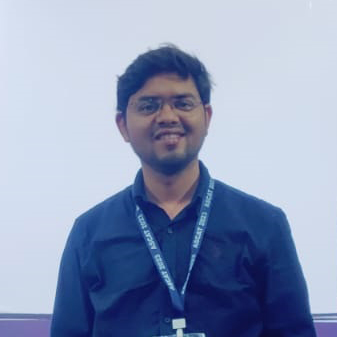
Vicky Vikrant
NIT TrichyThe school provided an extensive and in depth introduction to ca. the projects and guidance from the professors helped implement the theoretical knowledge into practical application. One of the best summer schools I’ve attended, good support from professors and other students.

Darshana V
NIT TrichyThis summer school immensely helped me to understand the current state of cellular automata as a technology and the potential issues therein. Attending this online school improved my understanding of alternative computational models, and I also got valuable suggestions for the project work during discussions and review meetings with mentors. Post-summer school, this work resulted in a research paper publication at the conference (ASCAT-2023) organized by the Cellular Automata India Society. This summer school was conducted online without any participation fee. It was an enriching experience for me, which I recommend to all cellular automata enthusiasts.
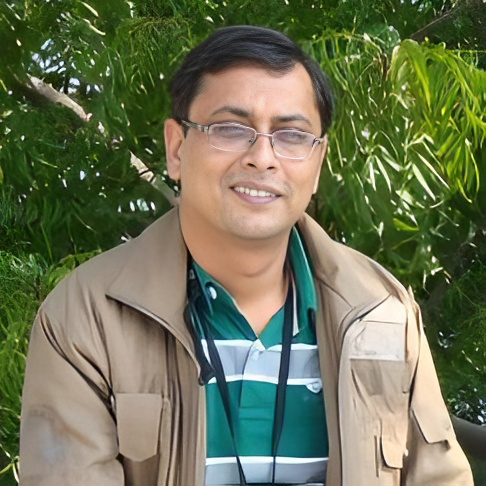
Rinkaj Goyal
Guru Gobind Singh Indraprastha UniversityThe teaching and the mentoring part was too good learnt a lot during the internship.

Deeraj
NIT TrichyScope to get the knowledge about cellular automata and to enhance the research activities. I am glad to be a part of cellular automata workshop as a beginner. I am very much obliged to the organizer, coordinator and the resource persons those who have helped us to gain knowledge abut this course and the research society working in this domain.
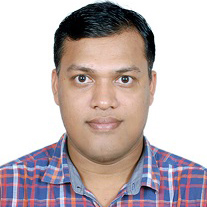
Khitish Kumar Gadnayak
NIT DurgapurPrevious Projects
Completed Projects in previous Summer Schools (Published Papers)
- All
- Summer School 2021
- Summer School 2022
Defining Reachability Tree under Adiabatic and Reflexive Boundary Condition Cellular Automata
Nazma Naskar and B K Sivaraj
Abstract. In this paper the elementary cellular automata is explored under adiabatic boundary condition and reflexive boundary condition, using the reachability tree. To construct the reachability
tree under the mentioned conditions, structures of those boundary conditions are analysed. The valid RMTs of root level and leaf level are identified. It was found that only at root level and leaf level, the structures
and arrangements differ slightly with the reachability tree of null boundary condition.
Information-Theoretic Analysis
of ECA Rules
(Genealogy Interceded Phenotypic Analysis (GIPA) of ECA rules)
R Goyal
Abstract. This project demonstrated the grouping of the ECA Rules using information theoretic measures in light of Wolfram's classification of ECA, with 88 rule equivalence classes. This study used
the concept of BiEntropy to compute the approximate information content of a binary string while quantifying the evolution of the macroscopic behavior in space-time diagrams for different rules. The amount of information
processed by a CA rule in a space-time patch was captured through four proposed measures, i.e., DiffEntropy (DE), SimConfig Ordered (SCO), SimConfigImmediate (SCI), and SimConfigFluctuation (SCF). Based on the information-theoretic
analysis, which was followed by the clustering of entropy values of different configurations through dynamic time warping (DTW), a Genealogy Interceded Phenotypic Analysis (GIPA) of 88 ECA rules was proposed.
Cellular-automata based simulation of dynamic recrystallization and statistical analysis of resulting grain growth
Subramanian R S, Sai Shree Ramadev and Prince Gideon Kubendran Amos
Abstract. By employing cellular automata technique, in this work, a polycrystalline system corroborating experimentally observed microstructure is developed. Moreover, through appropriate transition
functions, microstructural changes accompanying dynamic recrystallization, a manufacturing technique associated with the production of wide-range of components, is simulated. The grain growth that characterises this change
is analysed to explicate the trend in the temporal evolution of mean grain size and its kinetics. As opposed to a progressive increase in mean grain size, which generally typifies a conventional grain growth, in dynamic
recrystallization, it is observed that the mean grain size increases and decreases sequentially, thereby rendering a oscillating pattern. A perceptive investigation of the fluctuating trend unravels individual growth events,
characterised by monotonic increase in mean grain size, whose kinetics follow the third-order power law.
Cellular Automata as models in
Social Sciences
Rezki Chemlal
Abstract. In this project we were interested in the use of 2 dimension cellular automata in social sciences , we were very flexible in the last point as we also inculed models in urban modeling.We
also did not restict ourselevs to the formal definition of cellular automata as we considered also interesting models that may be considered close to cellular automata. We realised programs for all models.
Modeling the Spread of Covid-19
with 2-D Cellular Automata
Subrata Paul
Mentor: Kamalika Bhattacharjee
Abstract. This project focuses on developing a model that can accurately simulate COVID-19's global dissemination patterns. We utilize cellular automaton (CA) to build such a model. In this project,
a new variant of CA called Temporary Stochastic Cellular Automata (TSCA) is used, where two rules is being utilized, one of which serves as a default rule and the other of which is a probabilistic rule that is applied with
some probability. To consider the mutation of the COVID-19 rule, we employ a set of TSCAs. Each TSCA is considered as (f, g)[τ] and at a time the applied TSCA is chosen from the set. The model evolves using two TSCA rules
f and g, where f is represented as the propagation of the virus, g is represented as recovery function and g is applied with probability τ . The model is validated on the basis of a real-time dataset of spreading Coronavirus
(SARS-COVID-19) over the world. This proposed model depicts the spreading scenario of the novel Coronavirus which has caused a global pandemic.
Isomorphism In Cellular Automata
Vicky Vikrant
Mentor: Sukanya Mukherjee
Abstract. This work focuses on the isomorphism of cellular automata (CAs). Two cellular automata are said to be isomorphic if their configurations evolve in the similar way. As a model, here we use
non-uniform elementary cellular automata under null boundary and discover few inherent properties of CAs to decide whether the given cellular automata are isomorphic.
Hexagonal Cellular Automata Simulation of Intergranular
Cracking in Polycrystalline Materials
Tarun Kumaar M K, Deeraj H, and Suvetha M
Mentor: Prince Gideon Kubendran Amos
Abstract. The model takes an input of the desired number of nuclei, which are then distributed at random throughout the domain. For this system, we are considering 18 different grain orientations
associated with their own unique colours. Conventionally, cellular automata are associated with square discretization but here we have implemented hexagonal discretization and attempt to undertake a qualitative comparison
between them.
